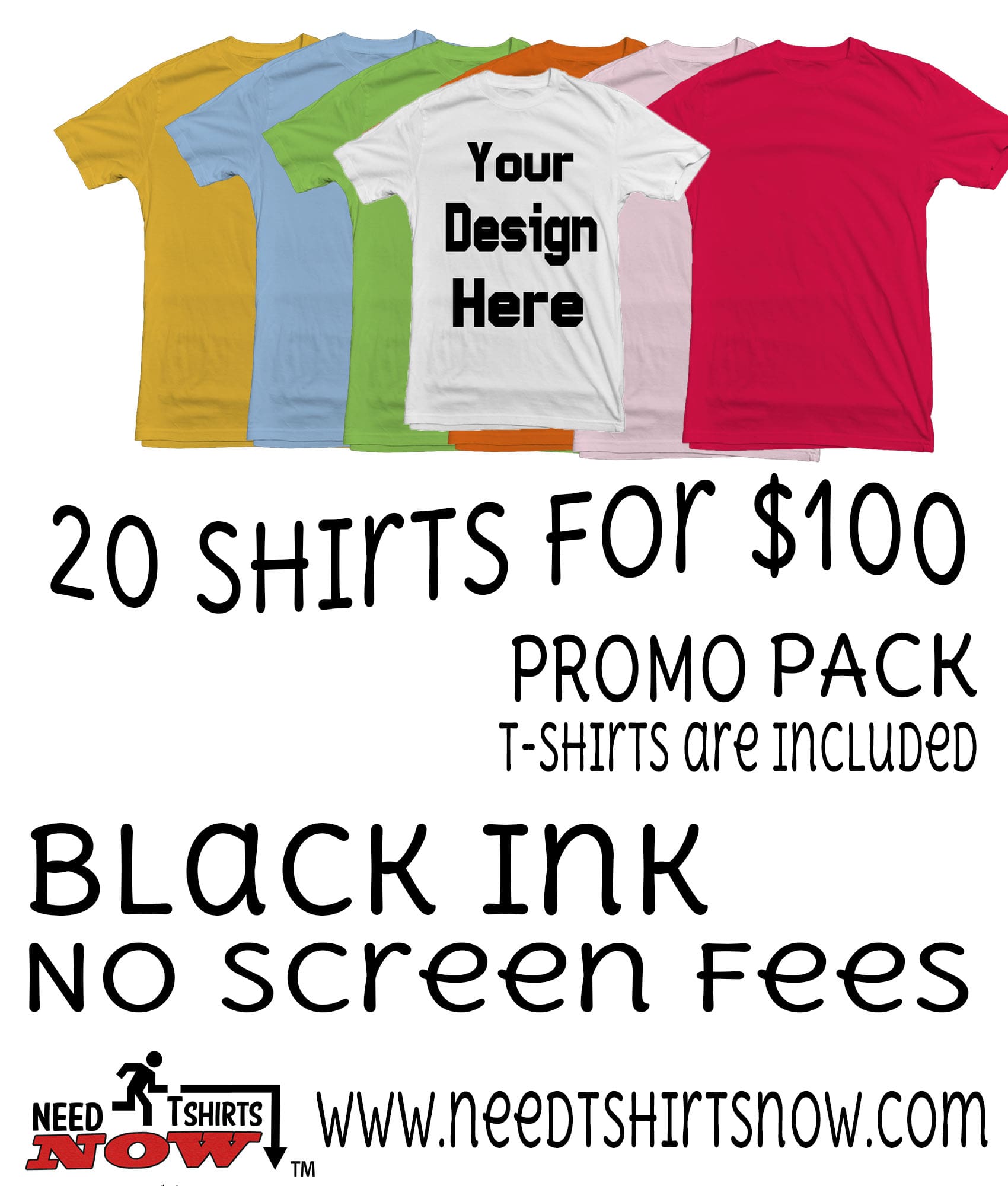Your shopping cart is empty!

Dtg printing also known as Digital Printing or Direct to garment printing is one of the newest methods of T-shirt printing. This method consists of an inkjet T-shirt printing that prints ink directly onto the shirt. The ink is specially made just for clothing and apparel. The majority of these printers use water-based inks. These garment inks are also known to be more eco-friendly.

The first thing we do is pretreat the shirts. With white shirts, pretreating is not necessary but we want to give our customers more value. The pretreatment on white shirts makes your prints more vibrate and the wash quality lasts a lot longer without fading. After we pretreat the shirts we press the shirts for 30 seconds using our heat press, making sure the pretreatment adheres to the shirt. Then we load the shirt onto the platen of one of our DTG printers. We Drag and drop the customers graphic unto our rip software.
The rip software gives us options to turn up or turn down certain setting such as contrast, lightness, brightness etc. We already have our pre-set so there is no need to change for the most part. There are some occasions that changing the settings is needed for certain graphics. That is why it is always a good idea to do test prints. After we have our setting correct we press print. The printer brings the shirt in printing our design onto the shirt. After the printer is finished printing we remove the shirt and load it back on our heat press. This Time we press the shirt for 1 ½ minutes. Now the ink is cured and the shirt is ready to wear.

Light or dark shirts with white ink
Just like the light shirts we pretreat the shirt. This time we use a different pretreatment specially made for white ink. After we heat press the shirt for 30 seconds. Again we load the shirt onto our printer and adjust the settings. Now since we are printing with white ink we look to see how much white is in the graphic. Sometimes there may not be any white ink in the graphic. We still use it to make certain images “pop”. We adjust how much white ink is being printing and adjust the CMYK settings also so there is no flooding. We press print and the printer now prints the white under base first. After the white under base is printed it will print the CMYK on top of it. After the shirt is done printing we will again cure the ink to the shirt with our heat press. This time curing the shirt for 3 minutes. Now the shirt is ready to wear.
T-shirts used for Dtg Printing

In the past The only shirts that were able to be printing on when using DTG printing needed to be 100% cotton. Now with some new techniques and formulas polyester is also able to be printed. We still only print with 100% cotton because it is still more durable. We also like to use premium cotton that is ring-spun.
We have the lowest Prices. T-shirts as low as $4.99 each.


Bella Canvas Unisex Fine Jersey Short-Sleeve T-Shirt 3001cFeatures:4.2 ..
$22.99
Business CardsTake Your Business to the next level with these 14 pt High Gloss Business CardsOu..
$8.50
Army Coyote Brown T-shirt Tan 499 Army T-shirtsThis T-Shirt is made to US ..
$22.99
Custom Face Mask100% combed ringspun cotton mask with ribbed cotton binding across the top, bottom a..
$6.99
Custom Hoodie Hanes brand or similar.9.7-ounce, 90/10 cotton/poly PrintPro® XP low pill, high-s..
$34.99
Port & Company Ladies T-shirt LPC or similar Discover the extra soft difference 1..
$14.99
Ladies V-neck T-shirtWe use High-Quality Gildan softstyle or similarGildan Softstyle® Juni..
$14.99
Mens and Womens Unisex Long sleeve T-shirt100% Ring Spun cott..
$19.99
Rabbit Skins Infants'5 oz. Baby Rib Lap Shoulder Bodysuit or similarFeatures:100% com..
$14.99
Custom Polo JerseyFeatures:100% preshrunk cotton jerseydouble-needle stitching throughoutwelt-knit c..
$24.99
Custom Toddler Hoodie front backHOW TO MEASURECHESTWith arms down at sides, measure around..
$29.99
Port & Company® Budget Tote B150Your basic carryall Tote at a great value.• 100% cotton• Reinfor..
$14.99
Custom Youth Hoodie Hanes or Gildan brand or similar.50/50 CottonFront PocketQuality GarmentsYouth H..
$29.99
District® Juniors The Concert Tank DT5301 or similar This carefree tank i..
$19.99
District® Young Men's The Concert Tank™. DT5300or similar Add th..
$19.99
3902Doggie TankDoggie Tank by Doggie Skins5.0 oz. 100% combed ringspun cotton (Heather is 93/7) 1x1 ..
$14.99
Toddler Long sleeve T-shirt3311 RABBIT SKINS TODDLER'S 5.5 OZ. JERSEY LONG-SLEEVE T-SHIRTFeatures:· ..
$14.99
Boys and GirlsAmerica's favorite tee—sized for the smallest family members.4.1-ounce, 100% ..
$12.99
Youth Long sleeve T-shirt100% Ring Spun cotton pre-shrunk Seam..
$14.99
Youth Custom T-shirt100% Ring Spun cotton pre-shrunk Seamless twin needle 7/8" collar..
$12.99